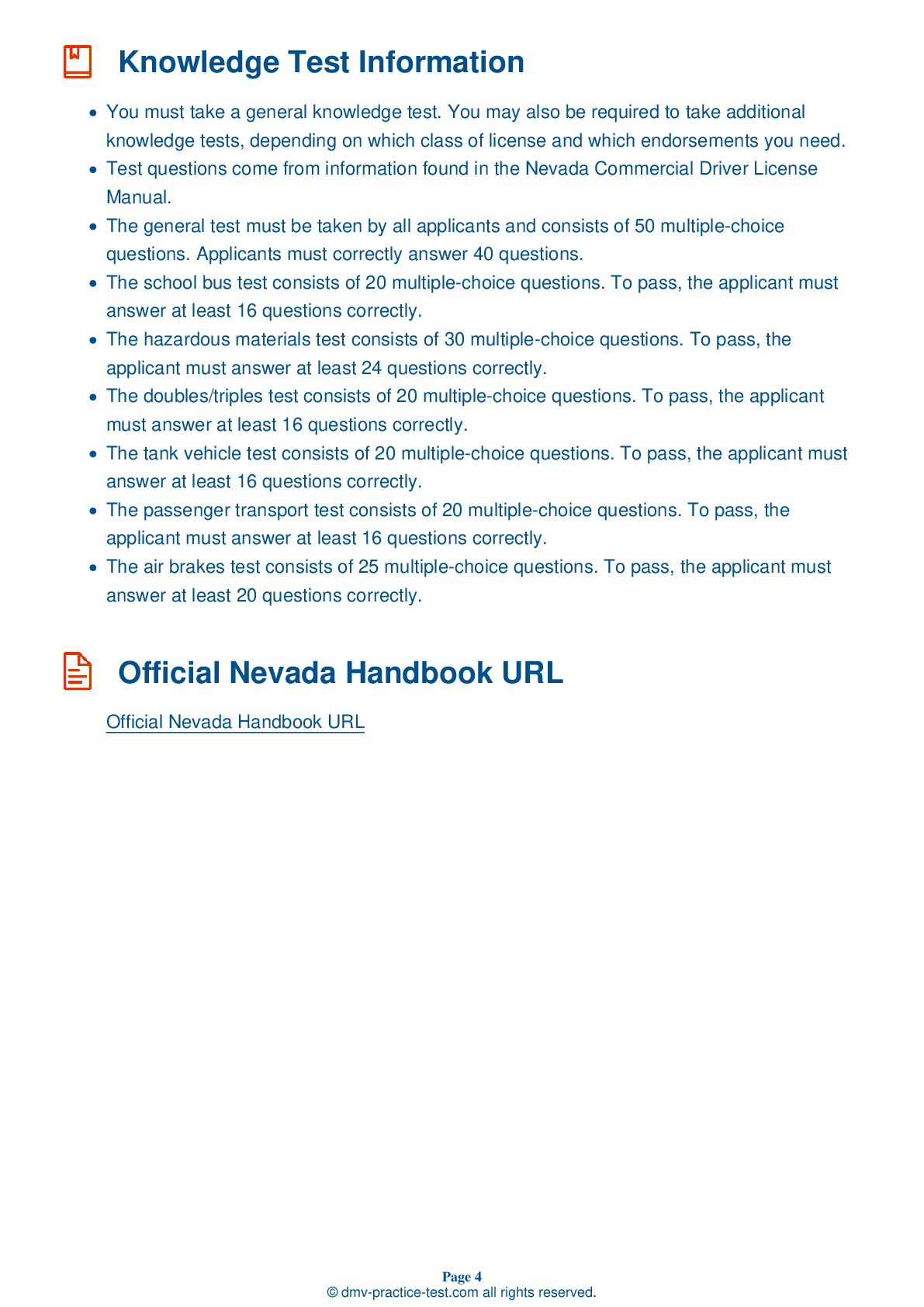Class B Driving Test | Nevada 2025 #2 Page 4 of 7
Train for FREE online with our Nevada class B license test. The official exam test consists of several obligatory parts, with all of them checking your knowledge of different blocks of road rules. If you need to obtain a NV CDL class B permit in 2025, practice as much as possible. Free sample tests published on our website will help you check and improve your knowledge and boost your grades. Please bear in mind that CDL class B requirements may vary from state to state.
22 . What must be done if a load is over-length?
Special equipment, such as warning flags or flashing lights, may be required if you are transporting an over-length load. When transporting such a a load, you will need to acquire the necessary permits. Driving is often limited to certain times.
23 . When operating a truck requiring a CDL:
A driver's seat should always be equipped with a seat belt. You must wear a seat belt at all times while operating a CMV.
24 . When traveling down a steep downgrade:
On a downgrade, the braking effect of the engine should be your primary method of controlling speed. Shift down to a lower gear before starting down the hill and save the brakes for additional slowing or stopping that may be required by road or traffic conditions.
25 . When taking the on-road driving skills test, you will be evaluated on your gear usage. You should not:
During the on-road driving skills test, you will be evaluated on your gear usage. Select a gear that does not rev or lug the engine; avoid grinding and clashing gears; and avoid shifting through turns or intersections.
26 . When traveling on a downgrade, a vehicle will:
On a downgrade, the force of gravity will cause a vehicle to speed up. Adjust your speed before approaching a hill to reduce overuse of your brakes.
27 . When it is difficult to see and you are traveling near other drivers, you should:
Use your low beam headlights when traveling near other drivers at times when it is difficult to see, such as at dawn, at dusk, or in poor weather conditions. Using the high beam setting under certain conditions could make it difficult for other drivers to see.
28 . The brake pedal is part of which braking system?
The service brake system applies and releases the brakes when a driver presses the brake pedal while driving normally.
See the exact questions that will be on the 2025 Nevada DMV exam.
99.2% of people who use the cheat sheet pass the FIRST TIME
Lillian MCcranie explains how our CDL study guide was helpful in passing the exam and recommends it to everyone.
Cameron tells us how he purchased the CDL exam, and found it to be a useful tool which helped him pass the exam and find a job.



